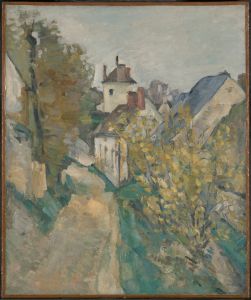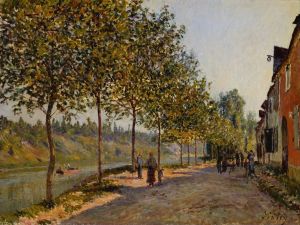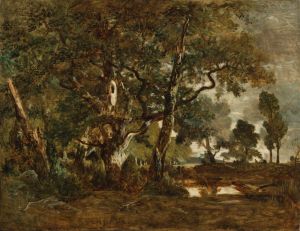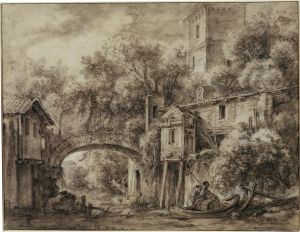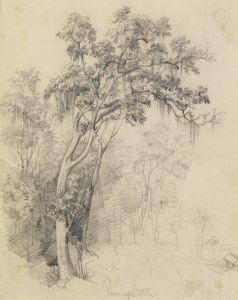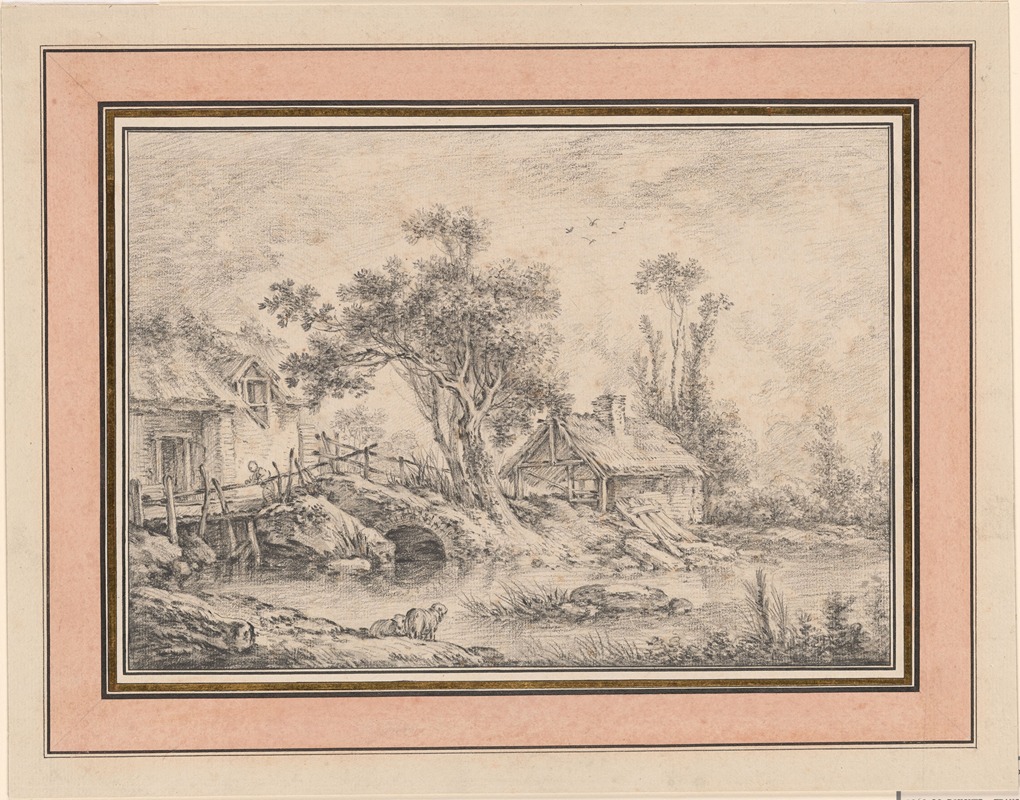
Thatched Mill Cottage and Shed with Two Trees at the Edge of a Stream
A hand-painted replica of François Boucher’s masterpiece Thatched Mill Cottage and Shed with Two Trees at the Edge of a Stream, meticulously crafted by professional artists to capture the true essence of the original. Each piece is created with museum-quality canvas and rare mineral pigments, carefully painted by experienced artists with delicate brushstrokes and rich, layered colors to perfectly recreate the texture of the original artwork. Unlike machine-printed reproductions, this hand-painted version brings the painting to life, infused with the artist’s emotions and skill in every stroke. Whether for personal collection or home decoration, it instantly elevates the artistic atmosphere of any space.
François Boucher (1703–1770) was a prominent French painter, draughtsman, and etcher, known for his idyllic and voluptuous paintings on classical themes, decorative allegories, and pastoral scenes. His work is often associated with the Rococo style, characterized by its ornate detail, lightness, elegance, and playful themes. One of his lesser-known works is "Thatched Mill Cottage and Shed with Two Trees at the Edge of a Stream."
This painting exemplifies Boucher's skill in landscape art, a genre that he explored alongside his more famous mythological and genre scenes. The artwork depicts a serene rural setting, featuring a thatched mill cottage and a shed, situated near the edge of a tranquil stream. Two prominent trees frame the scene, adding to the picturesque quality of the composition. The use of soft, natural colors and the delicate rendering of the foliage and water reflect Boucher's ability to capture the beauty of the countryside with a sense of romanticism and idealization.
Boucher's landscapes often served as backgrounds for his more elaborate compositions, but in this work, the landscape itself takes center stage. The painting is a testament to his versatility and his keen observation of nature. The thatched roofs, rustic buildings, and the gentle flow of the stream evoke a sense of peaceful rural life, which was a popular theme in the Rococo period. This focus on pastoral scenes was part of a broader artistic movement that sought to idealize and romanticize the simplicity and tranquility of rural existence, in contrast to the complexities and artificiality of urban life.
The composition of "Thatched Mill Cottage and Shed with Two Trees at the Edge of a Stream" is carefully balanced, with the natural elements harmoniously integrated with the man-made structures. Boucher's brushwork is fluid and expressive, capturing the textures of the thatch, wood, and water with remarkable finesse. The light in the painting is soft and diffused, creating a gentle, almost dreamlike atmosphere that is characteristic of Boucher's approach to landscape painting.
François Boucher was a prolific artist, and his works were highly sought after during his lifetime. He enjoyed the patronage of influential figures such as Madame de Pompadour, the mistress of King Louis XV, who was a great admirer of his work. Boucher's influence extended beyond his own paintings; he also played a significant role in the development of decorative arts in France, designing tapestries, porcelain, and other decorative objects.
While "Thatched Mill Cottage and Shed with Two Trees at the Edge of a Stream" may not be as widely recognized as some of Boucher's other works, it remains an important example of his contribution to landscape painting. It reflects the Rococo aesthetic's emphasis on beauty, elegance, and the idealization of nature, and it showcases Boucher's exceptional talent in capturing the essence of the French countryside.
In summary, François Boucher's "Thatched Mill Cottage and Shed with Two Trees at the Edge of a Stream" is a charming and evocative landscape painting that highlights the artist's skill in depicting rural scenes with a sense of romanticism and idealization. The painting is a fine example of the Rococo style and Boucher's ability to create harmonious and picturesque compositions.





